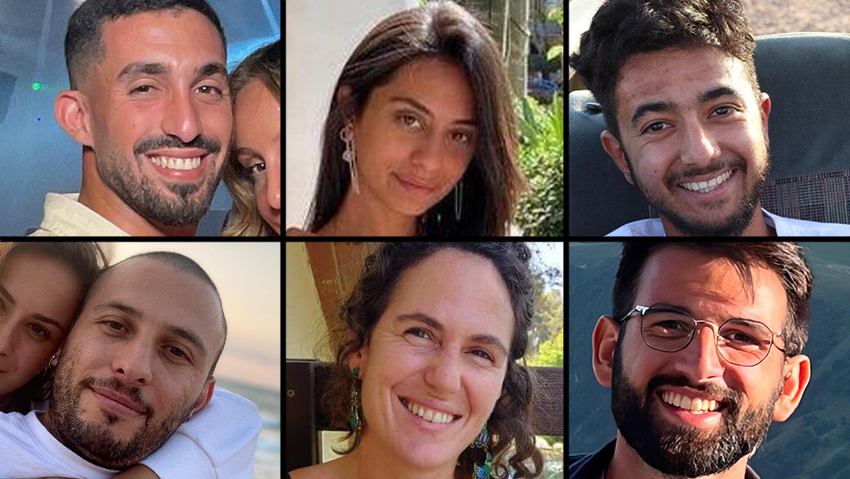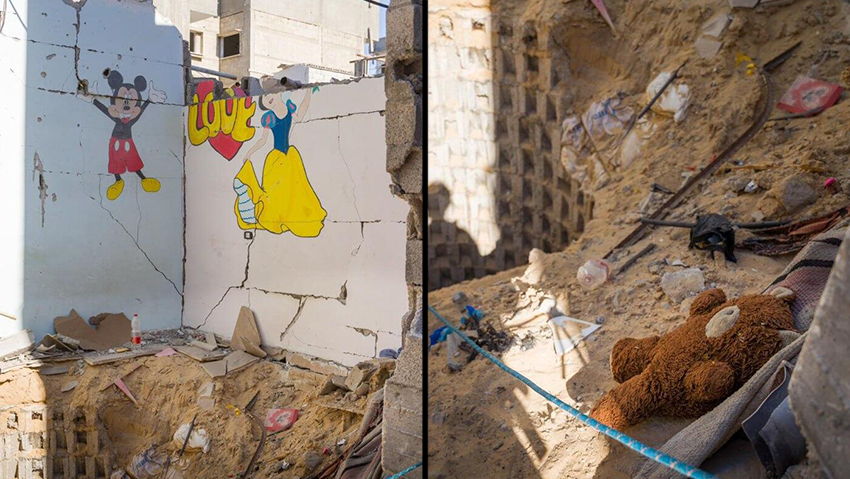Getting your Trinity Audio player ready...
In a heart-wrenching tale of endurance and tragedy, the families of Hersh Goldberg-Polin, Eden Yerushalmi, Ori Danino, Almog Sarusi, Carmel Gat and Alex Lobanov received a grim report from the IDF about their loved ones' ordeal and ultimate murderin a tunnel in Rafah.
According to the findings of the National Center of Forensic Medicine (Abu Kabir), these hostages were brutally murdered roughly 24 hours before IDF reached the site. Their bodies bore gunshot wounds and clear signs of severe neglect. It was evident that they hadn't bathed for an extended period, and one victim had marks indicating they had been bound. Additionally, there were traces of earlier injuries sustained during their initial capture, which had been treated over time.
The bodies of the six were not found lying side by side, but scattered in clusters throughout the tunnel. It remains unclear whether any struggle occurred before the captors executed them.
A report by Keshet News, an Israeli broadcasting network, revealed the hostages were confined in an exceedingly narrow and cramped tunnel. Standing upright was a struggle, and only two of them could lie down across its width at any given time. The tunnel lacked air vents, making breathing difficult. The captives had no access to toilets or showers, relying on water bottles for both drinking and rudimentary washing.
Food was scarce, and the captives were starved, leading to drastic weight loss. Eden Yerushalmi's body was discovered weighing merely 79 lbs.
Inside the tunnel, remnants of their harsh captivity were found: a few protein bars, a generator and a small flashlight that was unreliable. There was also a chess board, writing tools and notebooks, which security forces collected and are expected to give to the families.
Despite these dire conditions, the hostages managed to survive 330 days in captivity. Their lives were cruelly cut short by Hamas terrorists who feared an imminent IDF rescue mission. All six hostages were found with gunshot wounds to the head and other parts of their bodies. The state of their remains spoke of systematic neglect, including prolonged periods without bathing.
2 View gallery


From top left clockwise: Ori Danino, Eden Yerushalmi, Hersh Goldberg-Polin, Almog Sarusi, Carmel Gat and Alex Lobanov
(Photo: Courtesy of the families)
Israeli forces discovered their bodies in the Rafah tunnel, about two-thirds of a mile from where freed hostage Farhan Qadi had been found, at a depth of 66 feet and without prior intelligence. The exact whereabouts of the six had been unknown to the IDF in recent months, although there was awareness of hostages in the area. This uncertainty led to a cautious and gradual IDF operation in Rafah since the ground fighting began.
During the operation, there was no direct encounter with the terrorists, who fled after the murders. These terrorists might have been killed in ongoing battles above ground. Once discovered, the bodies were transported to the Israeli border by 4:00 a.m., where police and rabbinical teams confirmed their identities.



